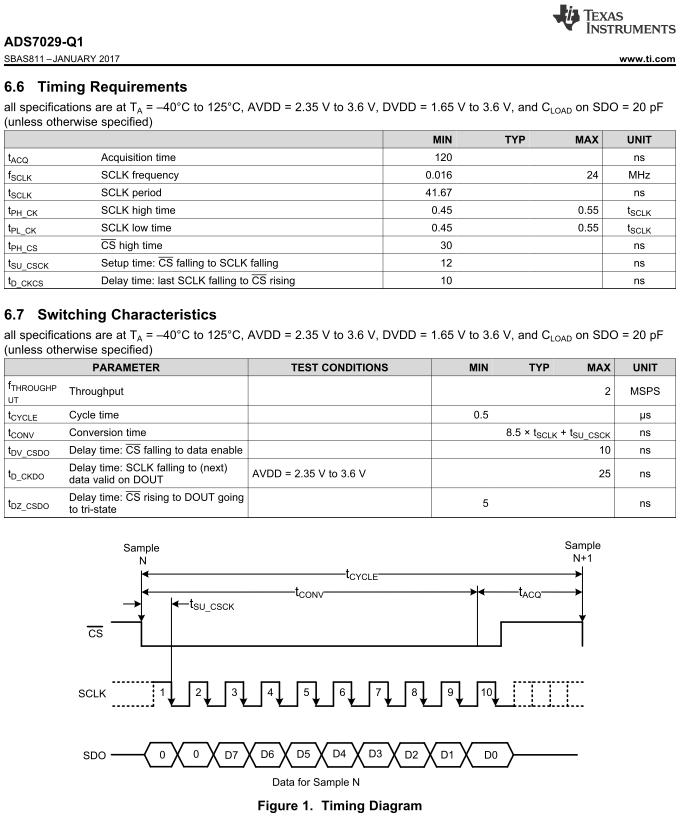Hi,
I would like to confirm regarding the serial interface, so could you please give me your comments ?
Q1.
Is my understanding correct that SDO becomes "0" when /CS falls and SDO remains "0" until SCLK falls ?
Q2.
Is my understanding correct that the rising edge of SCLK is used when capturing data with FPGA since SDO data is switched in synchronization with the falling edge of SCLK after /CS signal falls ?
Q3.
Is my understanding correct that zero data of 2-bit is always added to the output data as a dummy bit ?
Q4.
Is my understanding correct that D0 from SDO is output at the 9th falling edge of SCLK ?
Q5.
Does SDO hold D0 even if the 10th SCLK fall ?
Q6.
Does SDO hold D0 even if the 11th SCLK fall ?
Q7.
Is D0 held until /CS goes high ?
Q8.
Can SCLK is kept high when /CS is low ?
Best regards,
Kato


